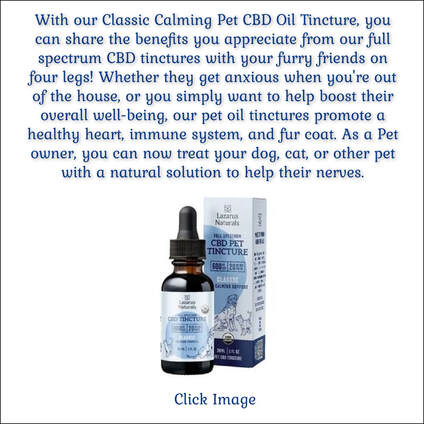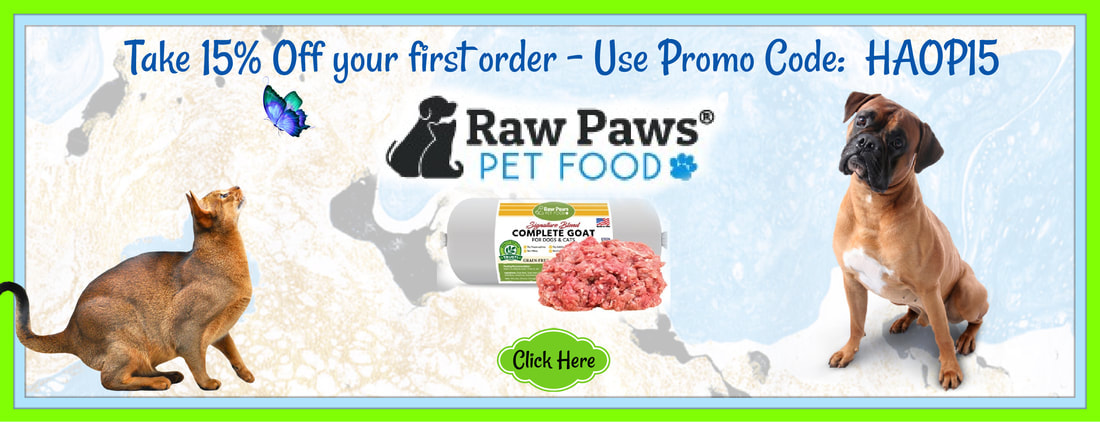
By Dr. Becker
Today I’d like to talk about, of all things, your dog’s tongue! It’s a small but very important organ, and since dogs do a lot of panting and licking, it’s also an organ we see a lot of!
Your dog’s tongue is a long, muscled, versatile organ. It’s attached to the back of the mouth by the basihyoid bone.
The top of the tongue is covered with five types of tiny mushroom-shaped papillae and pores that lead to taste buds. The rest of the tongue is made up of small bundles of muscle, connective tissue, and fatty tissue. It also contains lots of blood vessels, which is why it bleeds like crazy when it gets a cut. All around the tongue are openings to the salivary glands. Together, the tongue, teeth, and mouth comprise the oral cavity.
Today I’d like to talk about, of all things, your dog’s tongue! It’s a small but very important organ, and since dogs do a lot of panting and licking, it’s also an organ we see a lot of!
Your dog’s tongue is a long, muscled, versatile organ. It’s attached to the back of the mouth by the basihyoid bone.
The top of the tongue is covered with five types of tiny mushroom-shaped papillae and pores that lead to taste buds. The rest of the tongue is made up of small bundles of muscle, connective tissue, and fatty tissue. It also contains lots of blood vessels, which is why it bleeds like crazy when it gets a cut. All around the tongue are openings to the salivary glands. Together, the tongue, teeth, and mouth comprise the oral cavity.
Functions of the Tongue
The canine tongue has many distinct, complex functions it must perform. That’s probably why it’s fed by five separate sets of nerves that come directly from the brain through small openings in the skull. These are cranial nerves, and they originate from the base of the brain rather than from the spinal cord.
The main purpose of the tongue is to bring food and water into the mouth and allow your dog to taste what he’s eating and drinking. A dog’s tongue can detect the sensations of salty, sweet, and sour taste. The tip of the tongue gives him the ability to taste and lap water. The tongue also assists with chewing and swallowing.
Your dog’s tongue helps to regulate body temperature as well. As air passes back and forth over the tongue when a dog pants, it cools down the body. (This is how dogs “sweat.”) The cooling is also enhanced as saliva evaporates from the mouth.
Your dog uses his tongue to clean himself and lick sore spots on his body, as well as to clean up wounds or irritations on his body. Female dogs use their tongue to groom their puppies and also to stimulate urination and defecation by licking the puppy’s urogenital area.
The canine tongue has many distinct, complex functions it must perform. That’s probably why it’s fed by five separate sets of nerves that come directly from the brain through small openings in the skull. These are cranial nerves, and they originate from the base of the brain rather than from the spinal cord.
The main purpose of the tongue is to bring food and water into the mouth and allow your dog to taste what he’s eating and drinking. A dog’s tongue can detect the sensations of salty, sweet, and sour taste. The tip of the tongue gives him the ability to taste and lap water. The tongue also assists with chewing and swallowing.
Your dog’s tongue helps to regulate body temperature as well. As air passes back and forth over the tongue when a dog pants, it cools down the body. (This is how dogs “sweat.”) The cooling is also enhanced as saliva evaporates from the mouth.
Your dog uses his tongue to clean himself and lick sore spots on his body, as well as to clean up wounds or irritations on his body. Female dogs use their tongue to groom their puppies and also to stimulate urination and defecation by licking the puppy’s urogenital area.
Common Canine Tongue Disorders
A problem with your dog’s tongue can be a primary condition or a condition secondary to another problem in the mouth. Signs of a tongue problem can include a reluctance to eat, abnormal chewing motion, excessive drooling, a bloody discharge or a bad smell coming from the mouth.
Inflammation of the tongue is called glossitis. It can occur alone or in combination with stomatitis (inflammation of the soft tissues of the mouth), gingivitis (inflammation of the gums), or cheilitis (inflammation of the lips). There are a number of possible causes for inflammation of the tongue and mouth, including foreign body ingestion, exposure to toxic chemicals or plants, bacterial or viral infections, immune-mediated disease, metabolic disease, and nutritional disorders.
Another tongue disorder is ulceration that occurs as a result of systemic diseases like kidney failure or cancer. Ulcerations also develop in a strange, mysterious disease called eosinophilic stomatitis.
The tongue is also a potential location for tumor growth. Unfortunately, most tumors of the tongue in dogs are malignant (cancerous). Another type of growth on the tongue of dogs is oral papillomatosis, which is caused by the papilloma virus. These growths are actually teeny tiny warts. They kind of resemble tiny cauliflower heads, and they can appear all over the oral cavity. Fortunately, the condition tends to subside or resolve on its own after several weeks.
A problem with your dog’s tongue can be a primary condition or a condition secondary to another problem in the mouth. Signs of a tongue problem can include a reluctance to eat, abnormal chewing motion, excessive drooling, a bloody discharge or a bad smell coming from the mouth.
Inflammation of the tongue is called glossitis. It can occur alone or in combination with stomatitis (inflammation of the soft tissues of the mouth), gingivitis (inflammation of the gums), or cheilitis (inflammation of the lips). There are a number of possible causes for inflammation of the tongue and mouth, including foreign body ingestion, exposure to toxic chemicals or plants, bacterial or viral infections, immune-mediated disease, metabolic disease, and nutritional disorders.
Another tongue disorder is ulceration that occurs as a result of systemic diseases like kidney failure or cancer. Ulcerations also develop in a strange, mysterious disease called eosinophilic stomatitis.
The tongue is also a potential location for tumor growth. Unfortunately, most tumors of the tongue in dogs are malignant (cancerous). Another type of growth on the tongue of dogs is oral papillomatosis, which is caused by the papilloma virus. These growths are actually teeny tiny warts. They kind of resemble tiny cauliflower heads, and they can appear all over the oral cavity. Fortunately, the condition tends to subside or resolve on its own after several weeks.
Your dog’s tongue can sustain trauma from burns, cuts, punctures, or bites.
There’s also a disorder that can develop in a dog’s mouth that may initially appear to involve the tongue. It’s called a ranula. It’s actually a cyst that grows on the underside of the tongue, where the sublingual salivary glands stem from. The cyst causes swelling to the point where the tongue can actually be pushed up towards the roof of the mouth or off to the side. Dogs with this condition may have trouble eating, they may drool excessively, or show signs of a painful mouth.
Flat, black pigmented areas on your dog’s tongue and gums or inside the lips and mouth are perfectly normal. These dark areas are a result of microscopic melanin granules and are nothing to worry about. Often as a dog ages, these melanin areas tend to grow or change shape.
What isn’t normal is a dark area that’s not flat, but is raised above the surrounding tissues. If you notice any type of dark, pigmented tissue on your dog’s tongue, lips, or anywhere inside the mouth that looks like a bump or is raised instead of flat, it’s important to have your veterinarian look at it right away. It could be a melanoma.
There’s also a disorder that can develop in a dog’s mouth that may initially appear to involve the tongue. It’s called a ranula. It’s actually a cyst that grows on the underside of the tongue, where the sublingual salivary glands stem from. The cyst causes swelling to the point where the tongue can actually be pushed up towards the roof of the mouth or off to the side. Dogs with this condition may have trouble eating, they may drool excessively, or show signs of a painful mouth.
Flat, black pigmented areas on your dog’s tongue and gums or inside the lips and mouth are perfectly normal. These dark areas are a result of microscopic melanin granules and are nothing to worry about. Often as a dog ages, these melanin areas tend to grow or change shape.
What isn’t normal is a dark area that’s not flat, but is raised above the surrounding tissues. If you notice any type of dark, pigmented tissue on your dog’s tongue, lips, or anywhere inside the mouth that looks like a bump or is raised instead of flat, it’s important to have your veterinarian look at it right away. It could be a melanoma.
About half of all cancers affecting dogs’ tongues actually end up being a type of cancer called squamous cell carcinoma. Other types of tumors that can occur in a dog’s mouth are granular cell tumors and mast cell tumors. The earlier one of these cancers is diagnosed and treated, the better your dog’s chances of recovery. If you notice anything of concern in your dog’s mouth, you should have your vet take a look.
There’s also a condition called cyanosis in which the tongue and gums turn a blue or purplish color as a result of poorly oxygenated blood. Causes for cyanosis are quite serious and include heart and respiratory diseases.
If your dog is not a breed with a naturally dark tongue like a Chow Chow, and if you notice that your dog’s mucus membranes anywhere in the mouth or on the lips are turning blue or purple, it’s very important that you have your pet seen by a veterinarian as soon as possible.
There’s also a condition called cyanosis in which the tongue and gums turn a blue or purplish color as a result of poorly oxygenated blood. Causes for cyanosis are quite serious and include heart and respiratory diseases.
If your dog is not a breed with a naturally dark tongue like a Chow Chow, and if you notice that your dog’s mucus membranes anywhere in the mouth or on the lips are turning blue or purple, it’s very important that you have your pet seen by a veterinarian as soon as possible.
Your Dog’s Tongue as a Measure of Her Health
I recommend, as a part of your at-home wellness exam, that you include your dog’s tongue in your observations. Look for ulcers, bruises, or bleeding from the tongue or elsewhere in your dog’s mouth.
I recommend, as a part of your at-home wellness exam, that you include your dog’s tongue in your observations. Look for ulcers, bruises, or bleeding from the tongue or elsewhere in your dog’s mouth.
Also check for bumps within the oral cavity. Move your finger under each side of the tongue and push it up a bit, so you can get a good look at the underside of the tongue as well as the roof of the mouth.
Traditional Chinese medicine (TCM) practitioners use the tongue as a tool to provide additional information about the body’s well-being in conjunction with a physical exam.
A healthy tongue is normally pink unless, of course, you have a Chow Chow or another black-tongued breed. The tongue should not be coated, and there shouldn’t be any lumps, bumps, growths or raised areas.
Tongue colors of pale or white, deep red, blue or purple, and yellow orange can be assessed according to TCM principles:
A pale or white tongue may be a sign of a weakened body condition. This tongue color is seen in animals with anemia, leukemia, blood pressure problems, loss of blood, edema (fluid retention), generalized weakness, gastric system malfunction/GI issues, lung weakness, malnutrition, and lethargy.
A healthy tongue is normally pink unless, of course, you have a Chow Chow or another black-tongued breed. The tongue should not be coated, and there shouldn’t be any lumps, bumps, growths or raised areas.
Tongue colors of pale or white, deep red, blue or purple, and yellow orange can be assessed according to TCM principles:
A pale or white tongue may be a sign of a weakened body condition. This tongue color is seen in animals with anemia, leukemia, blood pressure problems, loss of blood, edema (fluid retention), generalized weakness, gastric system malfunction/GI issues, lung weakness, malnutrition, and lethargy.
A deep red tongue may indicate hyperactivity of one of the organ systems of the body and may involve a bacterial or viral infection, fever, gall bladder or kidney stagnation, hyperthyroidism, diabetes, cancer, or an accumulation of toxins somewhere in the body.
A bluish or purple-tinged tongue can suggest pain or congestion somewhere in the body and may point to a problem with the vascular system, heart disease, circulatory problems, respiratory problems, liver disease, toxicosis, organ stress, hepatitis, or autoimmune issues.
A bluish or purple-tinged tongue can suggest pain or congestion somewhere in the body and may point to a problem with the vascular system, heart disease, circulatory problems, respiratory problems, liver disease, toxicosis, organ stress, hepatitis, or autoimmune issues.
A yellow-orange tongue may indicate gastritis and gall bladder or liver malfunction.
TCM practitioners also evaluate any coating on the tongue. For example, if the coating is thick or pasty, it’s frequently a sign of imbalance in the digestive system, which is the largest immunologic system in your dog’s body. This often occurs when there is a yeast overgrowth in the body, and is commonly seen in pets fed grain-based diets that lack the bioavailable nutrients and enzymes required for healthy GI function.
TCM practitioners also do sort of a “regional analysis” of the tongue. Different areas of the tongue can point to problems with various organ systems within the body.
All that to say, if you notice that your pet’s tongue is changing shape, color, or texture, or if you notice a new bump or lump, it’s worth discussing your concerns with a holistic veterinarian.
TCM practitioners also evaluate any coating on the tongue. For example, if the coating is thick or pasty, it’s frequently a sign of imbalance in the digestive system, which is the largest immunologic system in your dog’s body. This often occurs when there is a yeast overgrowth in the body, and is commonly seen in pets fed grain-based diets that lack the bioavailable nutrients and enzymes required for healthy GI function.
TCM practitioners also do sort of a “regional analysis” of the tongue. Different areas of the tongue can point to problems with various organ systems within the body.
All that to say, if you notice that your pet’s tongue is changing shape, color, or texture, or if you notice a new bump or lump, it’s worth discussing your concerns with a holistic veterinarian.


















